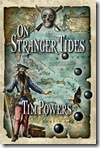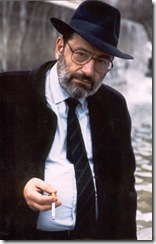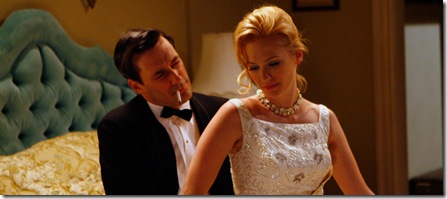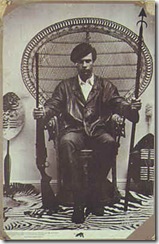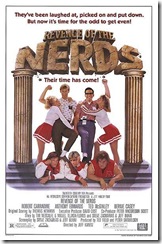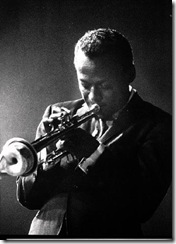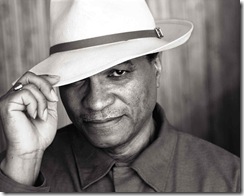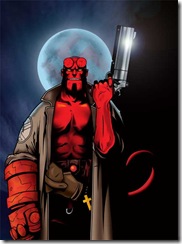
Hellboy is, at its heart, a conceit that allows Mike Mignola, the comic book author, to riff on various horror and fantasy motifs by inserting a gun-toting, cigar-smoking modern action hero (albeit one with a tail) into genres where he does not belong. The payoff in the comic books, sometimes successful and sometimes not, is simply in seeing how events unwrap.
There is a naturalness to adapting Hellboy for the big screen, since this is where this type of action hero was originally born. In Guillermo del Toro’s hands, what occurs is a reversal of the transposition Mike Mignola accomplishes in his graphic novels. We import into the action movie genre elements that do not natively belong to it and see what happens. As with the comic books, this is sometimes successful and sometimes not.
The original movie played with themes from H.P. Lovecraft’s Cthulu stories. The monsters were beautifully realized using CGI effects, but the incomprehensible horror that typically drove Lovecraft’s stories were displaced. They simply cannot exist in a world that revolves around an indefatigable hero.
The Hellboy sequel in turn plays, more than anything else, with Tolkien’s elves. The elves in The Golden Army are tall and filled with martial virtue. They are also masters of magic, and preservers of nature. Part of the high concept behind Peter Jackson’s production of Lord of the Rings was to bring out the nature loving motifs in every elven design, while highlight the industrial aspects of orc culture. As National Geographic (among others) points out:
Tolkien’s concern for nature echoes throughout The Lord of the Rings. Evil beings of Middle-earth dominate nature and abuse it to bolster their own power. For example, Saruman, the corrupt wizard, devastates an ancient forest as he builds his army.
The Elves, in contrast, live in harmony with nature, appreciating its beauty and power, and reflecting a sense of enchantment and wonder in their artful songs.
Orcs, however, always exist in some sense as placeholders for modern men. In The Golden Army, del Toro asks what would happen if Tolkien’s elves ever saw what we have now become. Del Toro’s answer is that they would go to war with us in order to preserve what remained of their world.
Visually, we once again see the Hieronomous Bosch inspired monsters we first glimpsed in Pan’s Labyrinth. They are beautiful and horrible at the same time — horrible enough to justify Hellboy as a hero as he battles them, but so beautiful at times that it seems a shame. It is this second aspect of the film, and Del Toro’s constant affection for outsiders, that undercuts the film as a participant in the action genre. Instead, the battles become exhausting over time, and we wish they would go away so we can enjoy the gentle details of Del Toro’s exotic world which have always been his specialty.
Hayao Miyazaki’s films can be identified as another influence on the visuals and mood of this film. One of the monsters from Hellboy II seems to be pulled right out of Princess Mononoke. The bestiary we encounter in the Goblin Market, likewise, recalls the parade of grotesques from Spirited Away. More than anything else, however, what is borrowed from Miyazaki is the device of placing a child in the middle of the battle between good and evil. We are forced to see the world through the eyes of a child who finds both good and evil to be ambiguous, which is the emotional location of all fairy tales. In Del Toro’s film, Anna Walton performs this role as Princess Nuala, the sister to the elf protagonist of the story who, with her big yellow eyes and zombie-like complexion, is strangely affecting and sympathetic.
All in all, the film is not successful — not because it does not know what it wants to be, whether action movie or heroic fantasy, but because there is nothing for it to be. These genres do not combine easily, and what we are left with instead is a plotline and a set of overlapping genres that provide Del Toro with a canvas upon which he paints detailed images that could not make an appearance in any other way. Those details were, for me, well worth the price of admission.
The big question is what Del Toro will do when he gets his hands on a real fantasy property. He is slated to direct the highly anticipated Hobbit movie, with Peter Jackson producing. There is, of course, what the movie ought to be — a continuation of the epic fantasy genre, done with the same accomplishment that Jackson achieved with The Lord of the Rings. If The Golden Army is any indication, however, this is unlikely to be what we will get. Del Toro’s recent interviews point to the same conclusion:
I was never into heroic fantasy. At all. I don’t like little guys and dragons, hairy feet, hobbits — I’ve never been into that at all. I don’t like sword and sorcery, I hate all that stuff.
This is fine with me. I’ve always been a fan of the Rankin/ Bass cartoon (with music by Glen Yarborough), and don’t see any reason to try to improve upon it. Seeing Del Toro take another stab at twisting the genre to his own ends is well worth waiting for.



